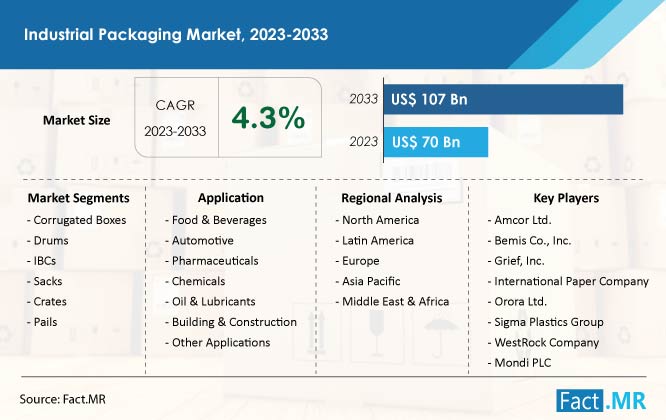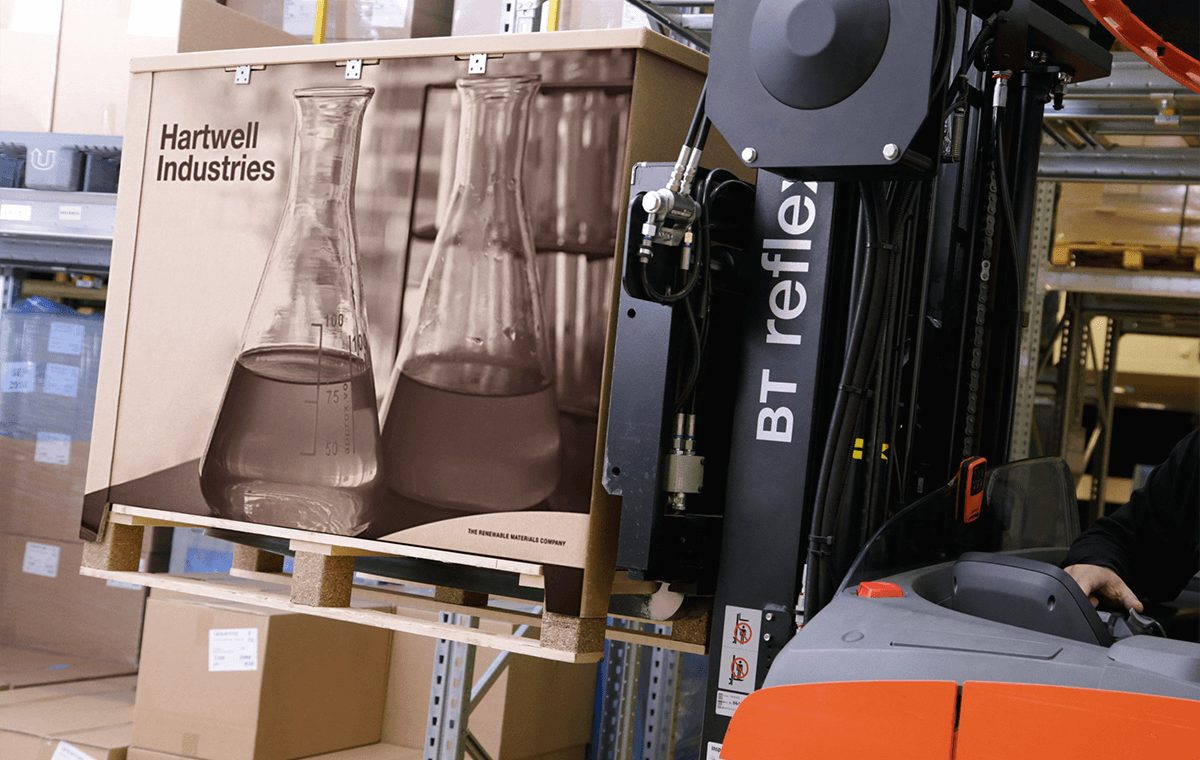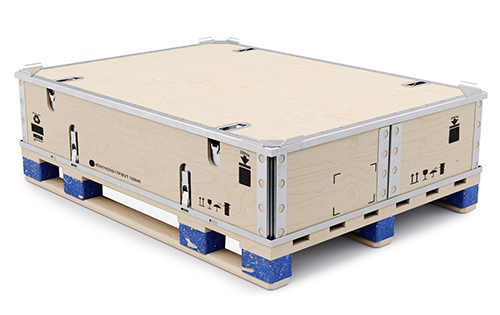Eco-Friendly Practices: Driving Change with Bulk Container Recycling
Eco-Friendly Practices: Driving Change with Bulk Container Recycling
Blog Article
Efficient Industrial Recycling Solutions for Sustainable Packaging: A Comprehensive Guide
That's where this comprehensive overview on efficient industrial recycling options for sustainable packaging comes in. By discovering key areas such as packaging material option, developing for recyclability, carrying out recycling framework, teaming up with reusing partners, and tracking and measuring recycling success, this overview will outfit you with the expertise and tools necessary to make educated decisions and drive favorable adjustment within your organization. Whether you're a packaging professional, sustainability supervisor, or simply interested in the subject, this overview will certainly give important understandings and techniques to aid you navigate the world of lasting product packaging.
Product Packaging Product Selection
The choice of product packaging materials plays an essential duty in making sure the sustainability of commercial reusing options. When it pertains to lasting product packaging, the selection of products is key in minimizing environmental impact and optimizing recycling effectiveness. Choosing the appropriate materials can help in reducing waste generation, conserve resources, and advertise a circular economic climate.
Products like cardboard, paper, glass, and particular kinds of plastics can be recycled multiple times without losing their high quality. On the various other hand, materials that are challenging to recycle, such as non-recyclable composites or blended plastics, can create difficulties for the reusing procedure and may end up in garbage dumps or burners.
An additional factor to consider is the use of sustainable and eco-friendly products. Packaging made from sustainable resources, such as plant-based plastics or biopolymers, can help in reducing dependency on nonrenewable fuel sources and mitigate climate modification. Furthermore, naturally degradable materials damage down naturally in time, lowering the accumulation of waste in garbage dumps.
In addition, the weight and volume of product packaging materials should be lessened to lower transportation expenses and power usage. Light-weight materials not only call for fewer sources during production yet also add to decrease carbon emissions during transportation.
Designing for Recyclability
In order to ensure the recyclability of packaging products, thoughtful layout is crucial. Creating for recyclability includes developing packaging that can be conveniently arranged, divided, and refined in reusing facilities. One essential element of creating for recyclability is the selection of materials. Packaging developers must focus on using materials that are widely approved for recycling and have established recycling frameworks. Products such as glass, aluminum, and specific kinds of plastic, like pet dog and HDPE, are generally recycled and ought to be favored over products that are challenging or costly to reuse.
Another important factor to consider in making for recyclability is the elimination of unneeded elements or materials. By minimizing the variety of layers, layers, and additional elements, packaging can be made simpler and much easier to recycle. In addition, developers need to aim to minimize the use of mixed products, as they can make complex the reusing procedure.

Implementing Recycling Infrastructure
Efficient implementation of recycling framework is important for the success of industrial reusing solutions. Without appropriate framework in position, the reusing process ends up being inadequate and ineffective, hindering the total goal of sustainable packaging.
To execute recycling facilities successfully, a number of crucial aspects require to be thought about. First of all, there should be a well-organized collection system that promotes the splitting up and collection of recyclable materials. This can include designated reusing containers in public areas, along with partnerships with waste monitoring business for curbside pick-up and sorting.
As soon as accumulated, the recyclable products require to be carried to reusing centers in a prompt fashion. This calls for efficient logistics and transport networks, guaranteeing that the products get to the proper centers right away.
At the recycling facilities, advanced sorting and processing innovations must be in area to separate various kinds of materials efficiently. This consists of making use of automated sorting makers, optical scanners, and manual sorting strategies.
In addition, there need to be a robust market demand for recycled products. This can be achieved via cooperations with suppliers and markets that utilize recycled materials in their production processes. Creating a secure market for recycled materials incentivizes the reusing sector and advertises the circular economic climate.
Working Together With Recycling Allies

One trick aspect of teaming up with recycling companions is the establishment of clear interaction channels. It is necessary to develop open lines of interaction to promote the exchange of info, updates, and comments. go to the website This enables both celebrations to remain informed Discover More Here concerning the progression of recycling campaigns and deal with any kind of challenges or problems that might develop.
Additionally, cooperation can involve collaborations in applying and creating reusing programs. Reusing companions can offer valuable insights and guidance in creating efficient collection systems and establishing the most appropriate recycling innovations. By interacting, businesses and reusing companions can enhance the reusing procedure and decrease waste.
Furthermore, cooperation can extend past the operational facets of reusing. It can additionally incorporate advocacy and education and learning efforts. By signing up with forces, businesses and reusing partners can increase awareness regarding the significance of reusing and promote the adoption of lasting product packaging methods amongst consumers and other stakeholders.
Tracking and Measuring Recycling Success
To guarantee the efficiency of industrial reusing solutions and the achievement of lasting product packaging objectives, it is critical for services and their reusing companions to establish a thorough system for tracking and determining reusing success (industrial packaging solutions). Tracking and measuring reusing success permits services to analyze the influence of their recycling efforts, determine areas for enhancement, and established purposeful targets for future progression
One means to track recycling success is with making use of data collection and evaluation tools. By accumulating data on the quantity of product packaging waste created, the portion of waste that is reused, and the kinds of products being recycled, organizations can obtain valuable understandings right into their recycling performance. This information can after that be analyzed to determine patterns, patterns, and locations of inadequacy.
One more important element of tracking and measuring reusing success is establishing standard and clear metrics. This permits services to contrast their performance against sector standards and track their progress gradually. Metrics such as recycling prices, waste diversion prices, and greenhouse gas emissions can offer a quantitative action of a service's recycling success.

Conclusion
In verdict, applying efficient commercial recycling remedies for sustainable product packaging needs mindful factor to consider of packaging material selection, creating for recyclability, applying reusing infrastructure, working together with recycling partners, and tracking and gauging recycling success. By including these practices, organizations can contribute to an extra environmentally-friendly and lasting strategy to packaging, minimizing waste and promoting the circular economy.
By discovering crucial locations such as packaging product selection, creating for recyclability, carrying out reusing facilities, working together with reusing partners, and monitoring and measuring reusing success, this guide will certainly furnish you with the understanding and tools essential to make enlightened choices and drive positive adjustment within your company. Packaging designers should focus on the use of products that are extensively accepted for reusing and have developed recycling frameworks.Cooperation with recycling partners is crucial for the successful execution of commercial reusing solutions and the achievement of sustainable packaging objectives. By joining pressures, organizations and reusing partners can elevate recognition regarding the relevance of recycling and promote the fostering of sustainable packaging techniques among customers and various other stakeholders.
By accumulating information on the amount of product packaging waste produced, the percentage of waste that is recycled, and the types of materials being recycled, services can obtain valuable insights into their reusing performance.
Report this page